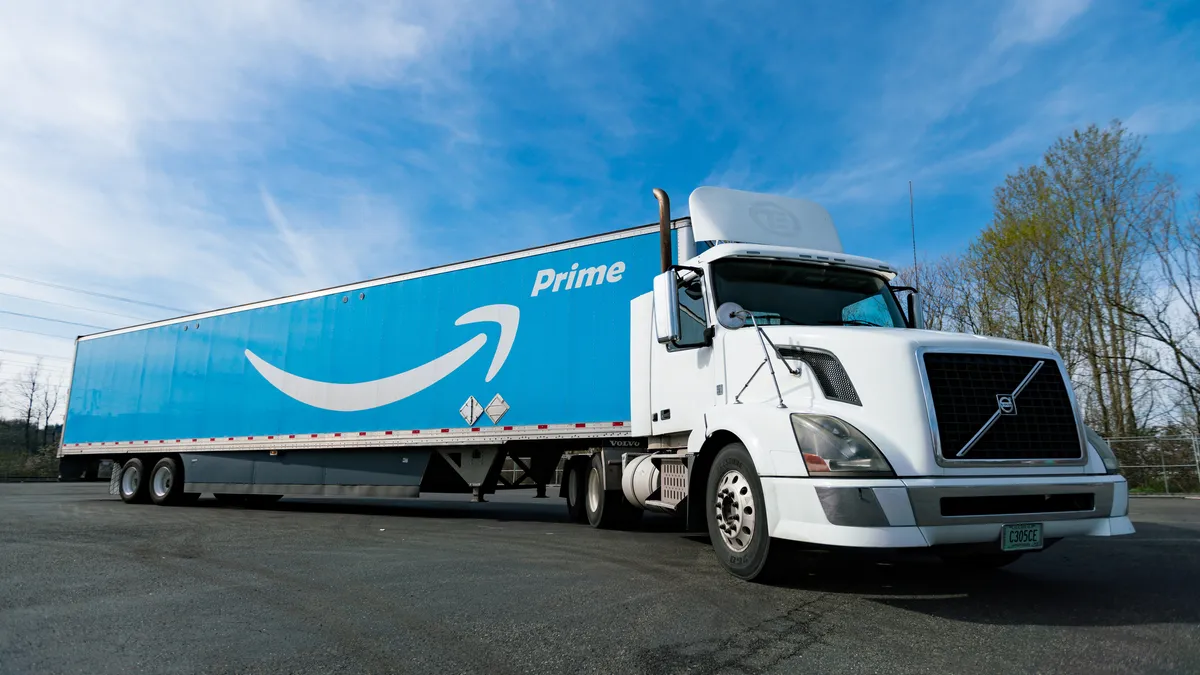Dive Brief:
- Amazon has confirmed that Prime Day will begin July 16 at 3pm ET, blasting the details on its website with a reminder that the day’s special deals accrue to Prime members only. This year's event extends to 36 hours from 30 hours last year.
- The date and duration depart from previous years. Amazon has been holding Prime Day on the second Tuesday in July, but some observers say the e-retailer likely wants to avoid competing with attention to the World Cup soccer championship on July 15. The e-commerce giant is already launching some major price cuts, good "now through Prime Day.” And Amazon is teasing the event as "Prime Day (and a half)" in press materials, marking the departure from previous years' more limited window.
- Whole Foods Markets will participate in Prime Day for the first time this year after Amazon acquired the natural foods grocer. According to an Amazon press release, Prime members will get an additional 10% off sale items and discounts on popular items at Whole Foods Market stores. Additionally, Amazon Prime Rewards Visa card holders will have access to double rewards on sales up to certain amount between July 14 and July 17 when shopping at the grocer.
Dive Insight:
Like Alibaba's Singles Day, Prime Day has morphed into more than a day, with a multitude of exclusive deals across its vast spectrum of merchandise categories. The e-commerce giant heads into the event this year with, officially, 100 million Prime members worldwide and, unlike last year, as the owner of grocery chain Whole Foods.
The company's Alexa-powered Echo devices and its Whole Foods chain will both drive sales and membership, according to Ryne Misso, director of marketing at Market Track.
And it's a big day. Last year's Prime Day was the biggest sales day ever in Amazon history, surpassing both Black Friday and Cyber Monday. It lasted 30 hours compared to the mere 24 hours of the first two events — and sales grew by more than 60% compared to the same 30 hours the prior year, with growth by small businesses and entrepreneurs even higher, Amazon said last year.
Prime membership also ballooned as non-Prime customers took at least a trial membership for the purpose of participating in the sale. More new members joined Prime on July 11 last year than on any previous day in Amazon history. It's not clear if as many will stick around, though, considering the price is now steeper by $20 a year. According to a survey of more than 1,000 U.S. consumers from Offers.com conducted for deals site BlackFriday.com, 20% are disgruntled about the price hike but said they'd use a free Prime trial to participate in the sale day.
While Amazon steals most of the spotlight on its big day, other retailers benefit from the midsummer attention to shopping. Last year the event stoked brands' and retailers' sales by an average 57%, according to online ad firm Criteo. And research CommerceHub emailed to Retail Dive found that last year niche consumer electronics and home appliance marketplaces got a healthy 60% sales boost, while Walmart enjoyed a 26% rise.
The longer window for Prime Day could create ripple effects for other retailers, according to Moody's Lead Retail Analyst Charlie O'Shea. The extension to 36 hours "ratchets up the pressure on all of retail, with 'counter measures' sure to negatively impact margins throughout the sector," O’Shea said in statements emailed to Retail Dive.
"More so than ever, we expect other retailers to roll out a heavy dose of promotions ahead, during, and after Prime Day in hopes of attracting shoppers and dollars, with some of the more challenged retailers facing the tough decision of how low to go," O’Shea said.
Editor's note: An earlier version of this cited incorrect statistics from CommerceHub and has been updated.















